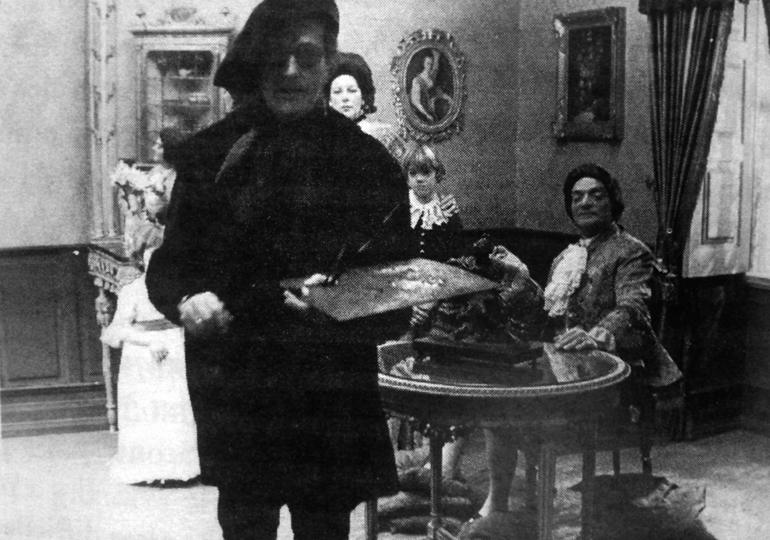THE WORD IS IMAGE
Manoel de Oliveira
 FORWARD
FORWARD
 DOWNLOAD
DOWNLOAD

The word is magic too, the word is cinema. At the beginning, cinema worked around the idea of movement. Cinema is part of photography, which is quite objective by itself, that’s why it stands out from painting. Since people appeared static in photographs, no matter what they were doing –jumping, dancing, walking-, that fostered the desire for movement. That’s where cinema had its origins, right there, in the desire of movement. But cinema is not only that. Gilles Deleuze, the French writer and philosopher, wrote two very important books for me: The Time-Image and The Movement-Image. He held many theories in them, that I make mine. For instance, it can be said that the word is image, since when I say table I see it, and if I specify how that table looks like, the table’s image gets sharper. If I speak about a door, I instantly feel what a door actually is; but if I say a flat door or a completely flat door, that is different, its image gets far more precise. Therefore, the word equates to the image. And time equates to movement. We can stand still here, stopped, but time won’t stop because of it. It’s a time that precedes and succeeds each and every thing. That’s why Deleuze wrote The Movement-Image and The Time-Image. Images imply words and time implies movement, and that ensemble shapes cinema. Cinema used to be silent, so there was a concern about how images should explain everything. Then voice and color came. But before, cinema was like dreams, which don’t have sound or color, so it might be said that cinema used to be dreamlike. By gaining color and sound, the word started to turn cinema more realistic, closer to life. In fact, the word was what truly made cinema become more realistic. That’s why we should abandon the idea that cinema is only movement, because it’s not enough. Only the gesture carries an expression. Something that moves doesn’t have to express anything. With gestures there is a sense of communication, an escape, a fear… That’s why I think the word is an irreplaceable part of what we call cinema. Sound, word, image and music are, in my opinion, the four foundations that ultimately support –like the columns in a Greek temple- the building of cinema. They render its unity and meaning.
Extract from «Entrevista a Manoel de Oliveira» in Letras de Cine nº7, 2003. By: Arroba, Álvaro; Diego, Israel; Villamediana, Daniel Vázquez; Rodríguez, Hilario J.
Nº 3 WORDS AS IMAGES, THE VOICE-OVER
Editorial
Manuel Garin
DOCUMENTS
As I Was Moving Ahead Occasionally I Saw Brief Glimpses of Beauty
Jonas Mekas
The Word Is Image
Manoel de Oliveira
Back to Voice: on Voices over, in, out, through
Serge Daney
FILMS UNDER DISCUSSION. INTERVIEWS
Sounds with Open Eyes (or Keep Describing so that I Can See Better). Interview to Rita Azevedo Gomes
Álvaro Arroba
ARTICLES
Further Remarks on Showing and Telling
Sarah Kozloff
Ars poetica. The Filmmaker's Voice.
Gonzalo de Lucas
Voices at the Altar of Mourning: Challenges, Affliction
Alfonso Crespo
Siren Song: the Narrating Voice in Two Films by Raúl Ruiz
David Heinemann
REVIEWS
Gertrud Koch. Screen Dynamics. Mapping the Borders of Cinema
Gerard Casau
Sergi Sánchez. Hacia una imagen no-tiempo. Deleuze y el cine contemporáneo
Shaila García-Catalán
Antonio Somaini. Ejzenštejn. Il cinema, le arti, il montaggio
Alan Salvadó

